There are many ways to heat your summer house without relying on electricity. In this guide, we’ve put together a list of common methods you can try. Some may require an upfront investment, but they are sure to help you save more in the long run, especially when used right. Read on to see which one you think will best fit your needs.
1. Invest in a wood-burning stove
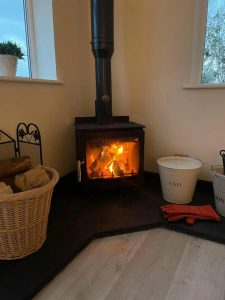
A wood-burning stove is a traditional heating source that has benefited mankind for centuries. Today’s design, however, offers more convenience. As long as you have enough firewood piled in your log store, you can keep your summer house warmer in winter while saving on heating bills.
Before making the switch, your garden room must be properly insulated (more on this later) to avoid heat loss. Extra care is also needed to prevent fire breakout, especially if the structure is made from wood. The addition of a chimney can help with venting smoke and fumes outside, keeping the interior air clean and safe to breathe.
Tip: Place the stove on a non-combustible surface and maintain a safe distance from walls and furniture for safety.
2. Harness the power of the sun

Summerhouses are often associated with summer weather due to their name, although they’re versatile for year-round use. While we’re at it, nothing’s better than maximising the hot days by harnessing the sun, which is at its peak. By installing solar panels on the roof, you can power your outdoor retreat without the expense of electricity.
The solar panels collect energy from the sun and convert it into power for later use. Not only is this a sustainable approach to a heating solution for your summerhouse, but it also allows you to do your part in saving the planet. It’s a win-win solution if you ask us!
Refer to our guide, ‘How to Install Solar Panels on a Shed,’ for step-by-step instructions.
3. Welcome more sunlight in
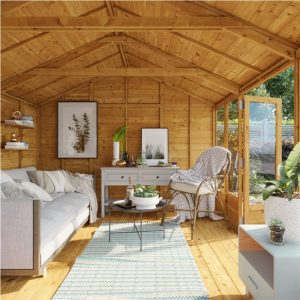
Days are shorter during the winter months, but the sun is still out and available to use. All you need to do is to draw back the curtains and open the windows to let the sun’s rays in. This also works during summertime when you wish for a brighter and airier environment while staying inside.
To use the sun’s power to your advantage, your summerhouse must be positioned in a spot that receives ample daylight, such as facing south.
4. Build a barrel stove
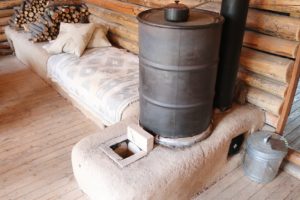
(Image Credit: Wikimedia Commons)
If you’re a DIY enthusiast, consider building your own stove instead of buying one. This can save you a lot of money, but you’ll have to do it right to make sure your effort isn’t wasted. An old metal barrel works well because it holds heat efficiently and is inexpensive and easy to find.
To turn the barrel into a stove, cut a door in the side for adding wood and an opening at the top for a stovepipe. Once done, place the barrel stove in a well-ventilated area to avoid the risk of carbon monoxide buildup.
5. Install solar water heating pipes
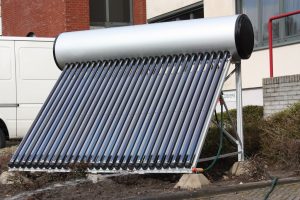
Another way to maximise the sun’s power is through solar water heating pipes. These systems work by circulating fluid through a series of black pipes exposed to sunlight. As the fluid heats up, it transfers heat to the surrounding air, raising the temperature inside the shed or summerhouse. Keep in mind, though, that this process is completely reversible. If the shed gets too hot, just open a window and let some sunlight in to cool things down again.
6. Consider summerhouse insulation
Like most garden buildings, summerhouses can be cold without proper insulation. Insulation traps heat inside, making the room warmer during winter. It also keeps the interior cool in summer, so it’s a worthwhile addition to your summerhouse layout.
Tip: Insulated summerhouses are available on the market, which can save you the cost of installing insulation. These models come equipped with insulated panels, but they typically come at a higher cost.
=IF(B21=0,”Please Choose A Category”,IF(E21=0,”Please Select A Number Of Products To Show”, SUBSTITUTE(C19,E18,E21)))
7. Use compost for heat
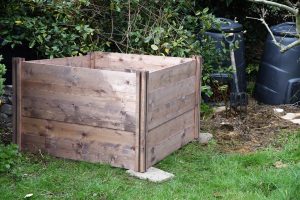
Composting is a great way to reduce your carbon footprint and help the environment. But did you know that compost can also help heat up your summerhouse? Basically, as compost decomposes, it releases heat. This heat can be captured and used to warm up the air in your garden room, reducing the energy needed for heating during winter. In summer, you can use the extra heat to help cool down the air inside.
And there you have it! Whether you choose the solar route or invest in quality insulation, you can enjoy your space all year round. So go ahead, cosy up with a good book, have a glass of wine, or invite friends over – your summer house will be at an ideal temperature no matter the season.
Up next on your reading list: Innovative Uses for Summerhouses During the Harsh Winter Months

